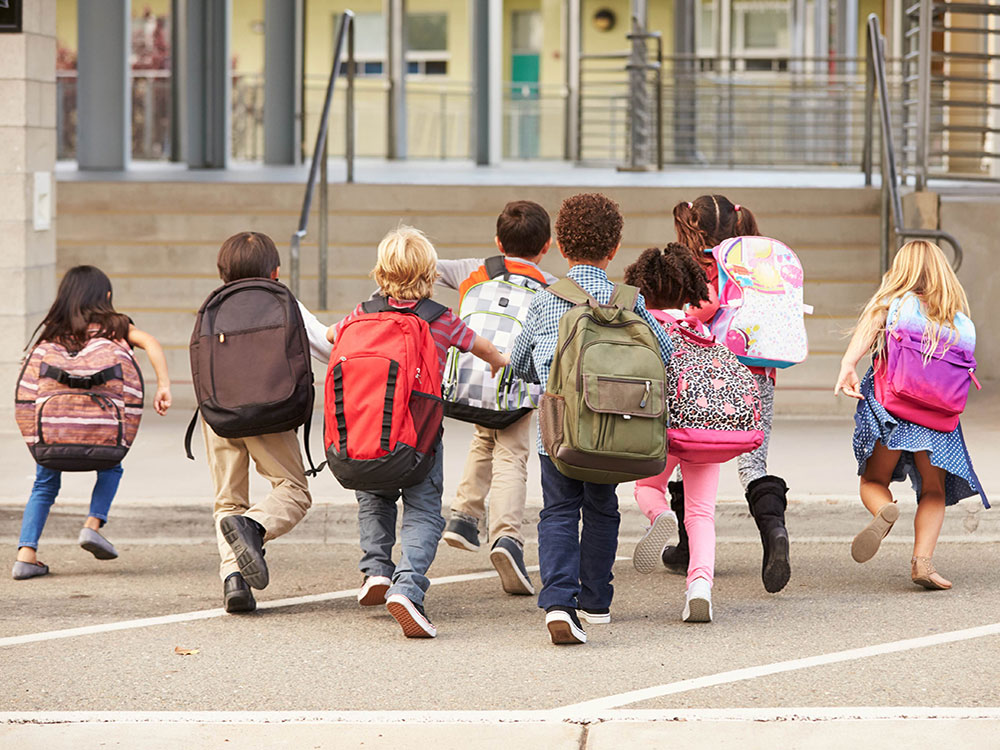Unknown to science four years ago, the SARS-CoV-2 virus that causes COVID-19 has surely generated more research studies than any virus before it. Many of them have to do with the “sequelae” of infection: ailments or conditions that arise after we seem to have recovered from the virus itself. Researchers are now trying to learn more about “post-COVID condition,” better known as long COVID.
Yet we may have disastrously underestimated one of the most serious sequelae: infection of the brain and nervous system. And we may have missed the neurological damage done to children and young adults who seem to have recovered from COVID-19.
Long COVID may include symptoms ranging from intense fatigue to anxiety to blood clots to heart conditions to loss of the sense of smell.
Many of these symptoms result from neurological damage, even in “mild” cases.
A team of Spanish researchers recently found that the virus can attack the vagus nerve in long COVID patients, triggering a wide range of symptoms from shortness of breath to neurocognitive complaints. The virus may also invade the nervous system through the olfactory nerve inside the nose. (This may be what causes some recovered patients to lose their sense of smell.)
The virus can then migrate into the brain.
Not just brain fog, but brain atrophy
Many COVID-19 patients report “brain fog” — an inability to think and remember clearly — but researchers in Brazil report even more serious effects. They included atrophy of the brain’s grey matter, serious memory problems, fatigue and “cognitive dysfunction associated with anxiety and depression.”
"The economic impact of these people’s health problems is evident,” the study’s lead author said, “underscoring the urgent need for specific treatment to reduce the loss to both the individuals concerned and society as a whole.”
In Shanghai and Hong Kong, researchers have found similar results, though they speculate that brain inflammation, not the virus itself, may be a factor in memory loss.
They also worry about the effect of COVID-19 on children’s developing brains:
“These long COVID symptoms, especially memory problems, can significantly affect the self-confidence and development of children in coming years,” the researchers write.
“Children under 10–12 years are supposed to be [in] the most important stages for the brain development, which [implies] that the effects of viral infection on children’s brains can be more destructive.”
How long COVID impacts kids
Surprisingly little research seems to have been done on the cognitive impact of long COVID on children and young adults. Findings like the study from China indicate that our attitude toward COVID-19 in children is based more on wishful thinking (and political expediency) than on science.
A major concern worldwide during the first years of the pandemic was its impact on children’s education. School closures were almost as traumatic as the pandemic itself; online education was a stopgap, and more accessible to affluent families than to those in the working class. Parents were assured that kids didn’t get COVID-19, or got only “mild” cases.
As late as July 2023, the BC Children’s Hospital was still telling parents, “So far, COVID-19 has affected adults much more than children. We think it is less severe, particularly in children under the age of 10.”
Similarly, the BC Centre for Disease Control advises that “children continue to be at low risk of getting very sick and requiring hospitalization with COVID-19.”
BCCDC also reassures us that, “Early studies suggest post-COVID-19 condition is less common in children and young people than adults.” But you don’t need to be “very sick” or be hospitalized to suffer neurological harm from COVID-19. And in any case we stopped counting cases long ago.
At the same time, school authorities, politicians and public health officials have seen the pandemic as more of an administrative problem than anything else.
A recent study of school closures in Canada, the U.S. and some European nations published in Education Canada argued that “learning essentially stalled during the pandemic. These studies also suggest that the pandemic may have exacerbated existing inequalities, with lower socio-economic status students falling even further behind their more affluent peers.”
At the same time, students’ mental health issues — already a problem before the pandemic — have only worsened since early 2020.
Persistent neurological damage in children
Health Canada’s long COVID page mentions cognitive problems among the symptoms of adults and children alike, but anxiety and depression as mainly adult symptoms.
A 2022 survey of Canada’s mental health system, conducted for the Mood Disorders Society of Canada, reported 70 per cent of respondents felt the pandemic had worsened mental health and 62 per cent said it had reduced access to mental health services.
Only 19 per cent said the pandemic had resulted in increased mental health care options. Sixty per cent said governments have not made access to mental health services a priority since the pandemic began.
If we connect these various studies, it seems likely that at least some children and young adults who contract COVID-19 suffer persistent neurological damage.
Quite apart from the loneliness of school closures and the inadequacy of Zoom lessons, a substantial portion of the student-age population is dealing with COVID-induced impaired cognition, memory loss, anxiety and depression.
If so, Canadian education systems don’t seem to be interested in grasping the scope of such a problem, let alone responding with suitable therapies and learning approaches. What’s more, they’re not responding with anything that might reduce ongoing cases.
Masking is almost non-existent. Classrooms with air purification are few and far between.
According to the BC Centre for Disease Control, the seven-day average of new COVID-19 cases in June was about two, an encouragingly low number. But BCCDC also counts almost 70,000 COVID-19 cases in children 19 and younger, and another 74,000 between 20 and 29. If only 10 per cent of them have developed long COVID, that means 14,000 young people facing short- or long-term disability.
As well, the possibility exists that yet another new strain will appear out of nowhere and race through our schools before we can build any kind of defence against it.
Wastewater studies in the U.S. indicate a possible uptick in cases is building. If so, Canada will certainly be affected as well.
Every reinfection is a threat
The chances of developing long COVID, complete with neurological damage, increase with reinfection.
That means some percentage of the present cohort of students will be lost every week, every month, every year. Whatever they might have achieved without infection, their achievements will be hobbled, perhaps for life, by long COVID.
At the same time, those who might address the problem are themselves dealing with it.
Early in July, the British Medical Association, or BMA, published a report on its members who have had long COVID.
Among other issues, the report found:
- Around 60 per cent of doctors told the BMA that post-acute COVID ill health has impacted their ability to carry out day-to-day activities on a regular basis;
- Almost one in five respondents (18 per cent) reported that they were now unable to work due to their post-acute COVID ill-health; and
- Less than one in three doctors (31 per cent) said they were working full time, compared to more than half (57 per cent) before the onset of their illness.
The report also quotes Dr. Kelly Fearnley, chair of Long COVID Doctors for Action:
“Infection control guidelines are fundamentally flawed: SARS-CoV-2 is airborne. It is outrageous that three-and-a-half years into this pandemic, staff and patients are still, knowingly and repeatedly, being exposed to a level-3 biohazard — a virus known to cause brain damage and significantly increased risk of life-threatening blood complications even in those recovered,” Dr. Fearnley said.
“Health-care workers must be provided with respiratory protection and the air quality in hospitals be monitored and improved through the installation of ventilation systems and air filter units.”
The situation in Canada is unlikely to be dramatically better than in the U.K.
In our rush to be “over COVID,” we have minimized its impact on children and young people and misdiagnosed those who haven’t been able to keep up academically with their classmates.
Even if we wanted to treat children’s mental health problems as merely the result of school closures, it’s unclear that we have the resources to do so.
After all, many health-care workers are off work because of long COVID as well.
If British hospitals need masks, air-quality monitoring and air purification, so do B.C. schools. It would be politically embarrassing to implement them, of course. Doing so would be an admission that opening up schools and de-masking were terrible mistakes.
But not to do so would be to inflict preventable damage on the lives of B.C. children and young adults, and on their families.
That would be a cruel burden to impose on the generation we hope will support us in the coming disastrous decades. ![]()
Read more: Health, Rights + Justice, Coronavirus

















Tyee Commenting Guidelines
Comments that violate guidelines risk being deleted, and violations may result in a temporary or permanent user ban. Maintain the spirit of good conversation to stay in the discussion and be patient with moderators. Comments are reviewed regularly but not in real time.
Do:
Do not: